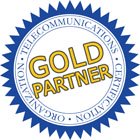Lessons In This Course
Lesson 1. Course Introduction
The first lesson begins the course with an overview of the course and lessons, plus general radio principles. It provides both a walkthrough of the course and a sample of the quality of the course graphics, text and presentation.
Lesson 2. Mobile Network Components, Jargon and Operation
The basic components and operation of a mobile communication network, including handset, airlink, antennas, base station, transceiver, mobile switch, backhaul, registration and handoffs.
Lesson 3. Cellular Principles
In this lesson, we’ll begin with the requirements on the communication system: mobility, coverage and capacity, then cover the idea of a cellular radio system, and how it is used to meet the coverage requirement, how frequency-division multiplexing was used to meet the capacity requirement in the first generation of cellular.
Lesson 4. PSTN Calls Using the Phone App: “Voice Minutes”
We’ll explore how voice is communicated over the radio access network, and how it connects to the world to make regular telephone calls. In this lesson, we’ll understand POPs, Toll Centers and the legacy Tandem Access Trunks used to connect the mobile network to the local phone company, other Local Exchange Carriers like cable TV companies and competing mobile operators, and to Inter-Exchange Carriers.
Lesson 5. Mobile Internet: “Data Plan”
Next, we’ll understand how the mobile network connects to the Internet at Internet Exchanges, transit and peering, and how devices can connect to the handset to gain access to its Internet connection, using it as a tethered modem, implementing a Wi-Fi access point in the handset, connecting with Bluetooth; or using the smartphone itself.
Lesson 6. Spectrum-Sharing Technologies:
FDMA, TDMA, CDMA, OFDM
Cellphones transmit and receive signals over shared radio bands. To separate users so that they do not interfere with one another, nor hear each other’s conversations, service providers use one of four radio band or spectrum sharing methods: Frequency-Division Multiple Access (FDMA), Time-Division Multiple Access (TDMA), Code-Division Multiple Access (CDMA) and Orthogonal Frequency-Division Multiplexing (OFDM).
Lesson 7. 4G LTE: Mobile Broadband
After more than 20 years of incompatible 1G, 2G and 3G systems, 4G was the first world standard for mobile. Since 4G, along with 5G, DSL, Cable modems and Wi-Fi all use OFDM, we’ll spend some time understanding OFDM, subcarriers and modulation, and how 4G implements OFDMA to support multiple users.
Lesson 8. 5G New Radio: Enhanced Mobile Broadband, IoT
In the last lesson on mobility, we’ll explore the fifth generation, called New Radio in standards committees. You’ll learn about the new spectrum for 5G, from the 600 MHz to millimeter-wave bands, and the bit rates to be expected at each. We’ll discuss the design goals for 5G, and finish with use cases including low-bandwidth IoT applications and ultra-bandwidth for VR.
Lesson 9. Wi-Fi: 802.11 Wireless LANs
Here, we provide an overview of the 802.11 wireless LAN standards, Wi-Fi and hotspots. We concentrate on understanding the variations of 802.11, the frequency bands they operate in, bit rates to be expected, propagation issues, and Wi-Fi 6, which is 802.11ac, the first to implement OFDMA.
Since 802.11 is wireless LANs, there are a number of associated topics: LAN frames, also called MAC frames, MAC addresses, LAN switches, IP addresses, routers and network address translation.
Those topics are covered in other courses, particularly “LANs, VLANs, Wireless and Optical Ethernet”, “Introduction to Datacom and Networking” and “IP Networks, Routers and Addresses”.
In this course, we concentrate on radio.
Lesson 10. Communication Satellites
In this last lesson of the course, we will take a quick overview of communication satellites, understanding the basic principles and the advantages and disadvantages of the two main strategies: Geosynchronous Earth Orbit and Low Earth Orbit, with an update on Iridium Next and Elon Musk’s Starlink.















 Lower-Frequency Energy Has Shorter Shadows
Lower-Frequency Energy Has Shorter Shadows
